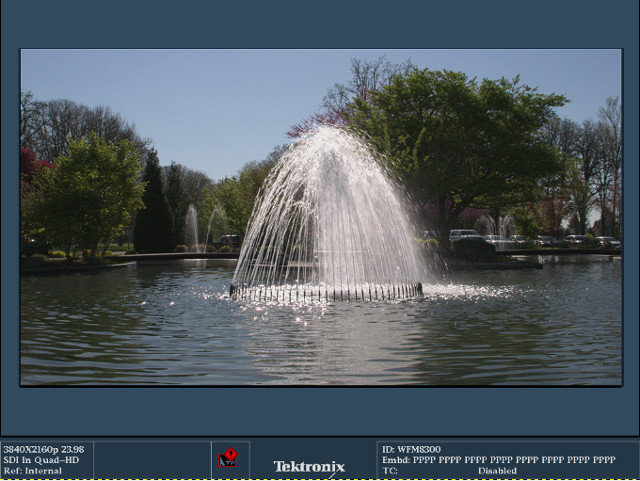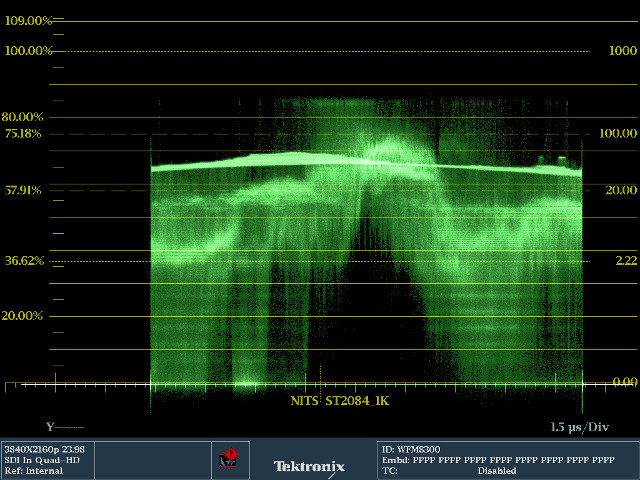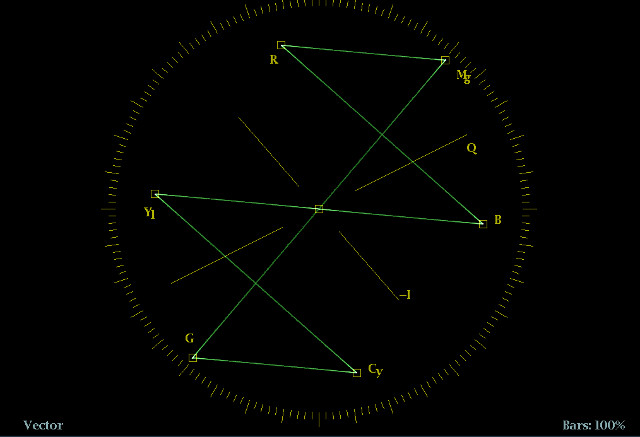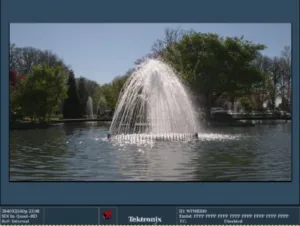Capture and production of HDR content is a hot topic of discussion – and we expect a great deal of developments at IBC shortly. But how do you know you are capturing signals correctly? That’s where waveform monitors and rasterizers come in – and Tektronix has two new models that support High Dynamic Range (HDR) and Wide Color Gamut (WCG).

According to Mike Waidson, Principle Engineer, Video Test at Tektronix, SDR (Standard Dynamic Range) cameras are designed to capture 5-7 f-stops of dynamic range but HDR cameras need to capture an 12-15 f-stop range. If SDR-based waveform monitors are used to look at HDR signals, the information will be wrong.
To address this, Tektronix has developed a new field-installable upgrade for their WFM/WVR 8000 series of waveform monitors and rasterizers for monitoring HDR and ITU-R Recommendation BT.2020 WCG formats. This enables camera operators, editors and colorists to easily capture and reproduce HDR images.
Waveform monitors are used for many purposes in the acquisition/production process. For example, camera operators must set up their cameras with a specific white point luminance voltage and Opto-Electric Transfer Function (OETF) or gamma curve, and consistent color performance to ensure signals from multiple cameras will match. Editors and colorists use the waveform monitor and embedded vectorscope to monitor incoming video signals. And they are used in R&D along with troubleshooting for installs and maintenance. Waveform monitors can check audio signals, video jitter and transmission degradation (eye patterns).
For example, the waveform monitor has graticules that help see the range of luminance/voltage levels coming from the camera of a video clip. The waveform monitor is then used to set the black levels in the shadows to near the legal 0 IRE level and to look at the highlight to be sure they are at the 100 IRE line. Some highlights may go above this up to a maximum of 109 IRE and these highlights may be clipped by processing equipment losing detail in these areas. As a result, the waveform monitor is used to adjust the camera exposure for the shot or by the colorist to do some tone mapping.
In the photos below we show a picture of a fountain captured in 4K resolution with HDR. Below it is the waveform analysis of the image. The nearly solid horizontal line is the blue sky with the water showing a dome of luminance values in the center. Note that the graticules now extend to 1000 nits on the right side with the corresponding IRE values on the left for the PQ curve. It looks like the highlights are clipped at around 500-600 nits suggesting this was captured for viewing on an OLED TV.


The vectorscope functionality is typically embedded in the waveform monitor as well and is used to check the colors of the content. Colors are arranged in a wheel-like arrangement with any scene showing a mix of colors. The vectorscope operator sets the color gamut standard, bit depth and levels (broadcast digital code values are different than film-based code values) so he can monitor the content to the production requirements. Displaying color bars for a broadcast production means they should show up at right in the target squares in the image below.

For SDR production, the diffuse white point is 100 nits and is set at the100% for ITU-R BT. 709 . But for HDR, there is no agreed upon diffuse white point level. However, Waidson suggests that many are again using 100 nits as the diffuse white point level, but now new graticules are needed to look at the waveform . Waidson says that the camera operator or colorist/editor must also know what reference monitor will used for grading the content. For example, if a 1000 nit monitor is used for grading, with a diffused white point of 100 nits is set at 75 IRE for SMPTE ST 2084 (1K). If a 2000 nit monitor is used, diffuse white is set at 68 IRE.
Likewise, the vectorscope needs to be upgraded to support display of the ITU-R BT 2020 primaries and add support for the PQ and HLG OETFs.
The HDR capability will be released in Q4 this year and included in Option PROD (a field upgradeable software-only option) for the Tektronix WFM/WVR 8000 series. Talk to Tektronix at IBC if you want to learn more. – CC

